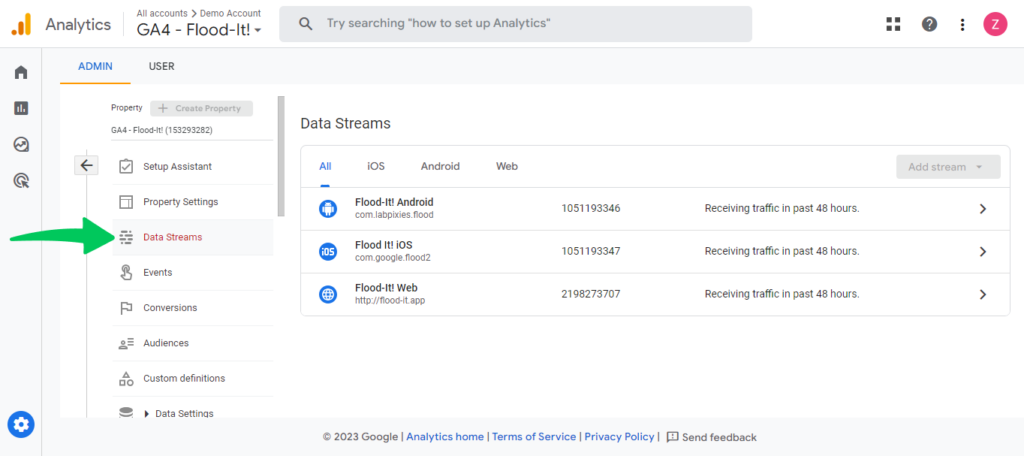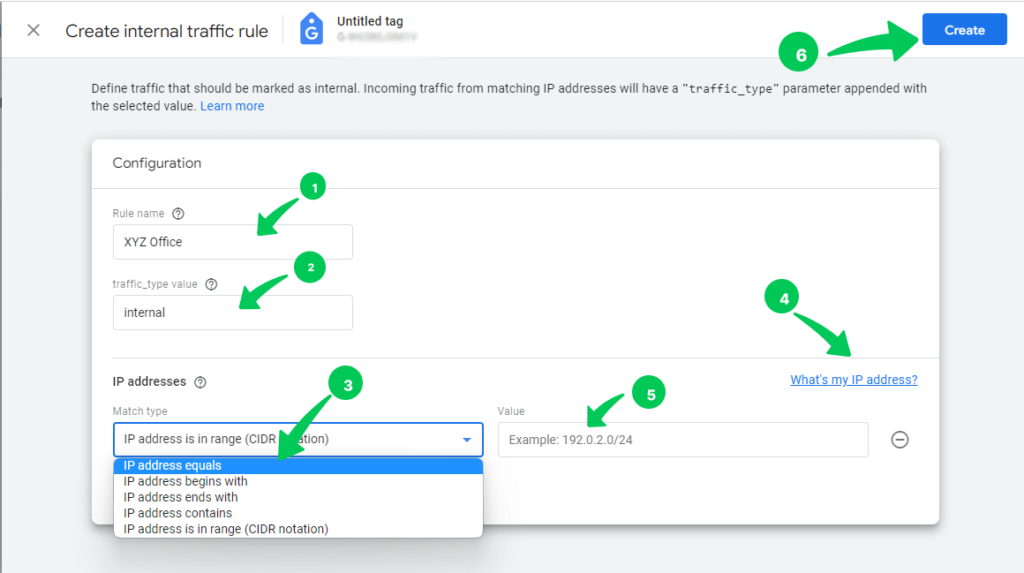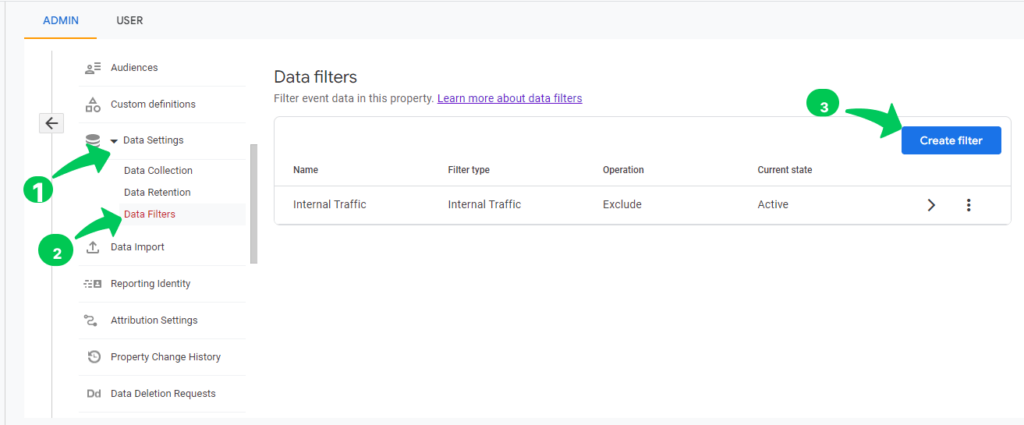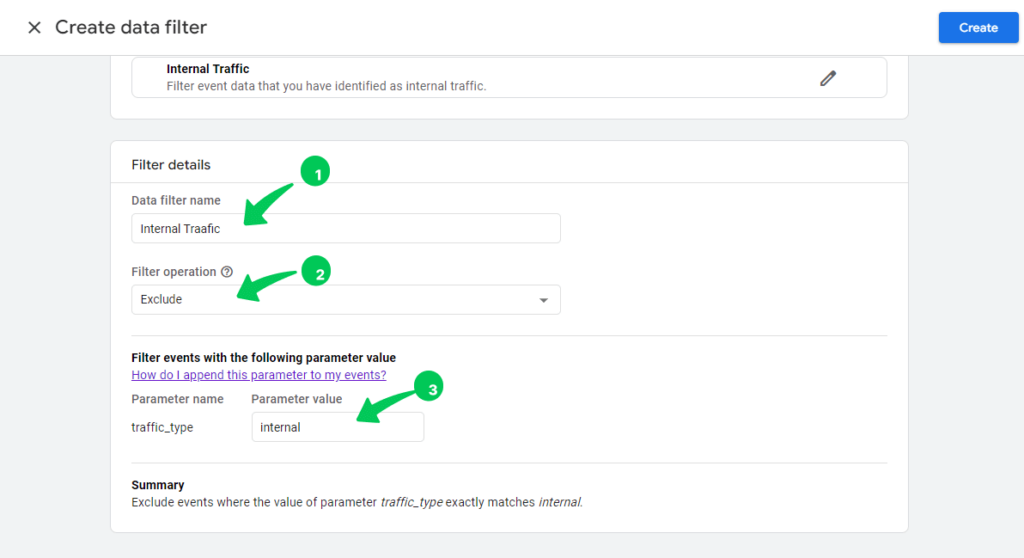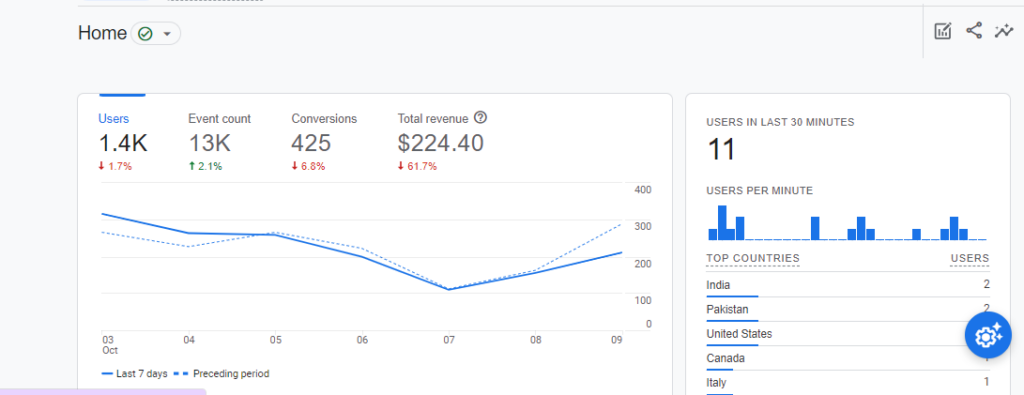
How to Filter Internal Traffic in Google Analytics 4
Do you want to know how to filter Internal Traffic in Google Analytics 4?
Google Analytics 4 helps you to evaluate website traffic and learn more about user behavior. However, it’s necessary to filter out the internal traffic to get an accurate report about the actual traffic coming to your website.
While using GA4 to track traffic, it’s expected that you may be tracking your own visits and interactions as those generated by your own marketing team members working on your website. In this way, you won’t be able to track actual visitors to your website. That’s why leaving internal traffic off in your GA4 report is important. In this blog, we will go over what internal traffic is, its pros and cons, and why it’s necessary to filter internal traffic in google analytics 4.
In this article:
What is Internal Traffic?
Internal traffic refers to the visits to your websites from your own team. It can include any person working in your business. It can be your client, employee, content writer, graphic designer, or any person working for you and alongside you on your website. This internal traffic can disturb the accuracy of your website analytics data, which can ultimately make it difficult for you to assess the amount and behavior of actual visitors on your site.
Why Should You Filter Internal Traffic in Google Analytics 4?
Now you might be thinking, why do you need internal traffic data at all if it can skew your website analytics data? It’s because internal traffic data itself has some importance. You can use internal traffic to test certain things, including new updates and changes, before making them live. You can figure out any issue or bug in your website. This will ultimately lead to quality control.
However, while analyzing the overall performance of your website, you may need to exclude this data.
The following are some cons for which you would need to exclude internal traffic data from your Google Analytics 4.
Internal traffic can make your Google Analytics data inaccurate because it can change your website metrics, like the bounce rate and the amount of time people spend on a page. For instance, your own employees visit the website to check the updates, and Google Analytics will show their behavior also. This can give you wrong information, which can make your decisions worse.
Internal traffic can make it hard to distinguish between internal traffic and real website visitors, which can mess up your analysis. This can lead to wrong assumptions about how users act and what they like.
It is suggested to get the most accurate information, you should filter out internal traffic in Google Analytics 4. So you can study how real website visitors behave.
Define Your Internal Traffic in Google Analytics 4
Before filtering internal traffic, you need to make sure whether you’ve defined internal traffic yet or not. Let’s help you in defining internal traffic so that you don’t have to put much effort into finding the accurate method.
We assume you’ve signed in to your Google Analytics 4 account.
Step 1: Navigate to Admin
To Define your internal traffic, you need to navigate to Admin.
Step 2: Choose Property and Navigate to Data Streams>>Web Stream
- Choose your GA4 property.
- Click on Data Streams.
- Under the Data Stream option, choose web.
- And, then click on your web stream.
You’ll be navigated to the next page.
Step 3: Click on Configure Tag Settings
Scroll down the page. Under the Google Tag heading, choose Configure tag settings.
You’ll be navigated to the next page.
Step 4: Click on Show all
Click on Show all under the Settings heading.
Step 5: Click on Define Internal Traffic
By clicking on show all, you’ll see a list of options. Here, click on Define Internal Traffic.
You’ll be navigated to the next step, where you’ll create your internal traffic through an IP address.
Step 6: Click on Create
After clicking on create, you’ll be navigated to the next page.
Step 7: Define Internal Traffic
You need to define your internal traffic by matching IP addresses. For configuration:
- Enter a Rule Name.
- Choose the name of the traffic.
- Under IP addresses Match type, choose an option accordingly. Let’s choose IP address equal.
- If you don’t know your IP address, click on What’s my IP address?
- Write IP address.
- Finally, click on Create. Congratulations, you’ve defined your internal traffic.
Fill in the form as shown in the below picture.
Now you’ve completed the major step of Defining Internal Traffic. Let’s move towards our main agenda of filtering out Internal traffic.
How to Filter Internal Traffic in Google Analytics 4 (Step by Step)
Step 1: Click on Admin
Step 2: Choose GA4 property>>Data Settings>>Data Filters>>Create Filter
Choose the GA4 property for which you want to exclude Internal traffic.
After this:
- Navigate to Data Settings.
- Click on Data Filters. You’ll see a table opened.
- There, click on Create filter, and you’ll be navigated to the next page.
Step 3: Choose Filter Type – Internal Traffic
Step 4: Filter Details to Create Filter
1. Write the Data Filter name e.g. Internal Traffic
2. Choose Filter Operation – Exclude
Note: Because you want to exclude, so make sure to choose the the Exclude option .
3. Choose Parameter Value – Internal
Step 4: Choose Filter State – Active
To completely exclude internal traffic, click on Active.
However, you can also use the Testing option for the purpose of just testing.

Note: If in the future, you don’t know How to inactive Internal Traffic Filter in Google Analytics 4. You have to navigate to this point and click on Inactive, to stop this filter.
Step 5: Click on Create
After filling in all the relevant and necessary information, click on Create at the right top corner.
Congratulation! You’ve successfully completed the steps to filter internal traffic in GA4.
Now you can see a prominent difference between traffic flow.
Check the below screenshot before applying the Internal Traffic filter:
Right after applying internal traffic filter, you can observe a prominent drop in Users in Last 30 Minutes.
Do you know that you can also track your website analytics directly on your WordPress site? Yes! Through Analytify, a WordPress plugin. Analytify shows you serious Analytics without boredom. Especially if you don’t understand stats, Analytify is the best option for you.
However, you can also use Analytify to integrate your website with Google Analytics if you are not a web developer or don’t like coding.
Explore our detailed guide on using regex for advanced data filtering in GA4.
Frequently Asked Questions
What is internal traffic Google Analytics 4?
Internal traffic in Google Analytics 4 is when people from your organization or company visit your website or app.
Why should I use Google Analytics 4 to filter traffic from my own site?
Filtering internal traffic can help you get more accurate information about how well your website or app is doing by removing visits from people who are not your actual customers or visitors.
How do I set up Google Analytics 4 internal traffic filters?
In Google Analytics 4, you can set up filters for internal traffic by making an exclusion filter that blocks traffic from certain IP addresses o that are part of your organization. For this, you navigate to Data Settings>>Data Filters>>Create filter. However, before creating this filter, you’d need to define your internal traffic.
How can I identify internal traffic in GA4?
You can identify internal traffic by examining IP addresses associated with your organization. Look for consistent IP ranges used by your team.
What if I do not filter internal traffic in GA4?
Failing to filter internal traffic can lead to inflated visitor counts, skewed user behavior data, and inaccurate performance metrics, which may result in misguided decisions.
Conclusion
So, you need to filter out internal traffic to get accurate data and learn more about actual visitors to your website.
Using the data filters in Google Analytics 4, you can ensure that your website analytics data is accurate and reflects your real website visitors. This can help you improve the way your website works and your business strategy as a whole.
We hope, after reading this article, you can easily define and implement GA4 filter internal traffic.
However, you may also like to Track Facebook Traffic in Google Analytics 4.
Now, we would love to know from you. What are some of your favorite strategies for keeping your website analytics clean and accurate?
Do you have more questions on how to exclude internal traffic in Google Analytics 4? Share your insights in the comments below.



